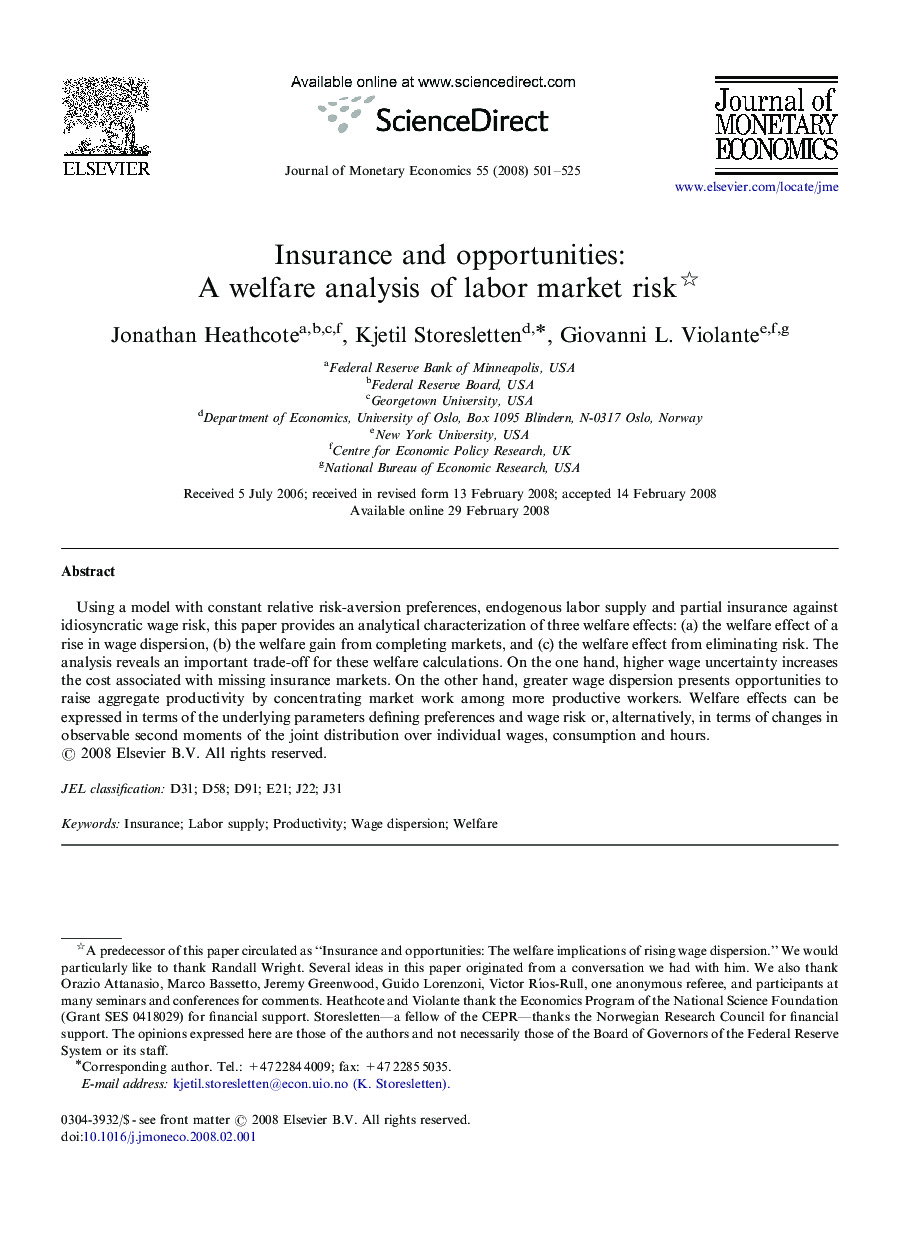| Article ID | Journal | Published Year | Pages | File Type |
|---|---|---|---|---|
| 967607 | Journal of Monetary Economics | 2008 | 25 Pages |
Using a model with constant relative risk-aversion preferences, endogenous labor supply and partial insurance against idiosyncratic wage risk, this paper provides an analytical characterization of three welfare effects: (a) the welfare effect of a rise in wage dispersion, (b) the welfare gain from completing markets, and (c) the welfare effect from eliminating risk. The analysis reveals an important trade-off for these welfare calculations. On the one hand, higher wage uncertainty increases the cost associated with missing insurance markets. On the other hand, greater wage dispersion presents opportunities to raise aggregate productivity by concentrating market work among more productive workers. Welfare effects can be expressed in terms of the underlying parameters defining preferences and wage risk or, alternatively, in terms of changes in observable second moments of the joint distribution over individual wages, consumption and hours.
